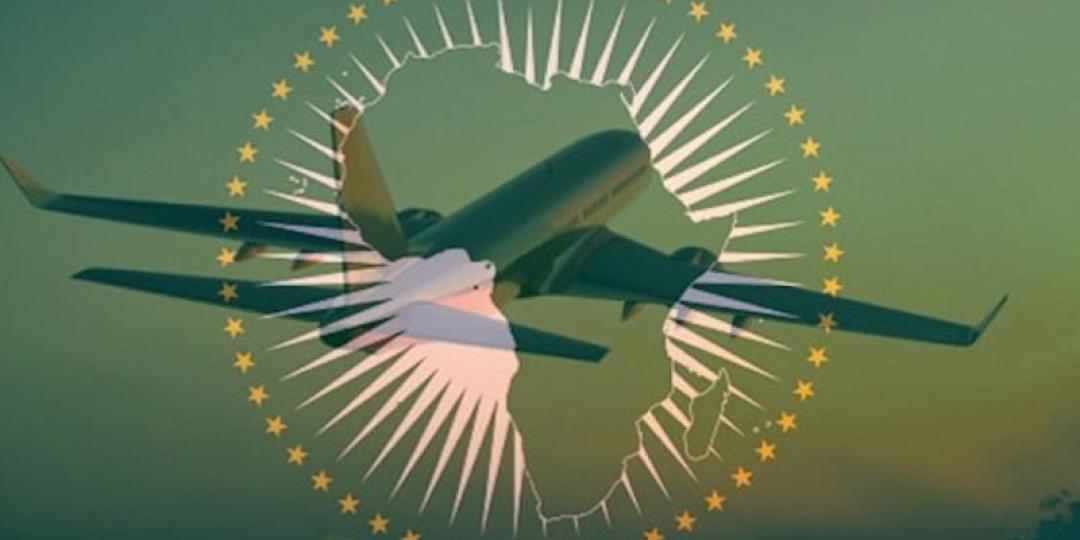Intra-Africa air connectivity is making headway, with local aviation experts expressing cautious optimism about the growth prospects for the southern African region, noting that several barriers to improved air access still need to be addressed.
This comes after the Centre for Aviation (CAPA) highlighted in its 'Charting Trends' report earlier this month that intra-Africa air connectivity had exceeded the two million weekly internal seats figure for the week commencing December 18.
This is the sixth time that this landmark figure has been achieved. Previously, there was a consecutive five-week period between the weeks of December 9 and January 6, when a record of 2.04 million was achieved in the week commencing December 16, 2019 (pre-COVID).
Following that period, intra-Africa air connectivity dropped 0.6% compared with pre-pandemic levels for the week commencing January 15, according to data from CAPA and OAG, an air travel intelligence company specialising in the delivery of digital information and travel planning solutions to clients such as airlines, airports, government agencies and travel-related service companies.
“December is a peak travel month in the intra-Africa calendar, and capacity levels will decline over the remainder of Q1 2024, following historical trends. It may be premature to start looking ahead to the end of 2024, but there is potential for 2024 to break the record for intra-Africa connectivity,” the report stated.

Top intra-Africa airlines
Ethiopian Airlines is the dominant airline in the intra-Africa market, with a 14.4% share of capacity in the week commencing January 15 – up 11.0% on the comparable week in 2023.
Ethiopian is in a commanding position, as no other airline has a double-digit share of capacity, with its closest rival being South Africa’s FlySafair (9.0%).
This is ahead of Nigeria’s Air Peace (5.4%), the fast-expanding regional airline Airlink (South Africa) (4.9%), and the other leading international airlines in the continent: EgyptAir (4.4%), Kenya Airways (4.2%) and Royal Air Maroc (3.7%).
“We’re thrilled to be involved in infra-Africa travel to the extent that our aircraft and operating model can accommodate. We launched our regional strategy post COVID, first tentatively with connections to Mauritius, and now more fervently with our connections into Zambia, Zimbabwe and Mozambique. It’s great to be in these markets and bringing a low cost option to travellers there,” said Chief Marketing Officer of FlySafair, Kirby Gordon.
“Our vast constellation of southern African destinations, in conjunction with our high frequency of services using the right size of aircraft to fit the market size, is alluring to our customers from source markets worldwide. We have intra-line – within our own network – and interline (in conjunction with our 35 partner airlines’ networks) connectivity. These partnerships are key to establishing seamless single ticket, multi-carrier and multi-sector connectivity,” said CEO & MD of Airlink, Rodger Foster.
SAATM gains momentum
Airlines Association of Southern Africa (AASA) CEO, Aaron Munetsi, told Tourism Update that the association was encouraged by the two million weekly seats milestone, and that it would continue to advocate for increases in the intra-Africa market, which will result in the implementation of the Single African Air Transport Market (SAATM) by all African countries.
“The SAATM has gained momentum and made impressive progress with 38 countries signed up, representing more than 80% of the African population and the airlines accounting for more than 75% of intra-Africa connectivity,” he said.
He added that AASA’s responsibility to increase intra-Africa travel included but was not limited to the opening up of borders through the Free Movement Protocol which encourages removal of visa requirements for Africans, implementing the African Continental Free Trade Agreement, and the SAATM – all three of which are African Union flagship projects for the Agenda 2063.
“Intra-Africa connectivity will be enhanced by the granting of traffic rights to African airlines, especially Fifth Freedom traffic rights. Cost containment for airlines will result in affordable airfares that stimulate travel, thereby increasing the load factors and making the operations sustainable and profitable.
“Increasing intra-Africa travel will also enhance the economic development of the African economy through the catalytic effect of aviation. Aviation contributes to the GDPs of economies by creating jobs and increasing economic activity through tourism development,” Munetsi said.
He did, however, concede that there were still major challenges to increasing intra-Africa travel.
“Protectionism by some countries is one of the major challenges. Some countries deny or delay granting traffic rights to foreign African airlines to protect their national carriers. The issuance of Foreign Operator Permits (FOPs) is also constantly used as a barrier to entry by some countries who seek to protect their own carriers by charging exorbitant fees for FOPs.”
Munetsi concluded that the future was very positive based on the initiatives being implemented by various entities such as the African Civil Aviation Commission’s SAATM Pilot Implementation Project.
“The next five years are critical for the continued growth of African aviation. Our focus at AASA is to ensure that our member airlines’ interests are kept at the forefront and are prioritised in order for all the parties to benefit from the development of aviation on the continent.”






















